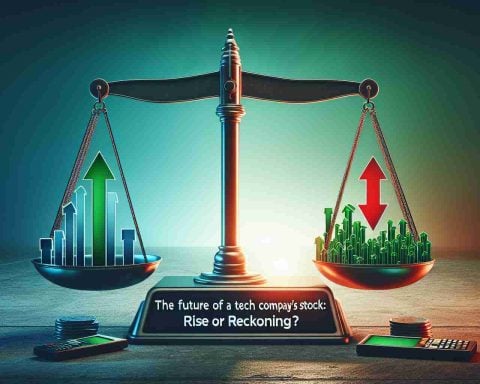- The streets of Strasbourg are set for a major demonstration as Kurds in France conclude their “longue marche” to demand the liberation of Abdullah Öcalan.
- The march, starting from Lorient on January 26, will culminate in Strasbourg on Saturday, February 15, transforming the city with thousands of participants.
- The demonstration highlights broader calls for freedom and autonomy beyond Öcalan’s personal situation.
- Strasbourg’s daily life will experience significant impacts, with transit disruptions affecting tram and bus routes, and key stations like Étoile Bourse halting operations from 11 a.m.
- Organizers and officials emphasize patience and understanding, noting the march’s focus on universal themes of liberty and collective voice.
A quiet anticipation blankets the cobbled streets of Strasbourg, as the city readies itself for a vibrant surge of passion and purpose. This Saturday, February 15, the final steps of the “longue marche,” undertaken by Kurds in France, will echo across the city, transforming it into a tapestry of ardent voices. What began in Lorient on January 26 culminates in an emphatic statement here, where thousands will congregate, demanding the liberation of Abdullah Öcalan, a figure held in isolation on a Turkish island since 1999.
As the sun rises, intricate avenues normally brimming with morning busyness will surrender to a compelling cause. Streets and squares — from Boulevard de Lyon to Place Dauphine — will brace for a tidal wave of impassioned demonstrators, their presence rewriting the rhythm of the city. Echoes of the march carry a reminder: this isn’t just about one man but speaks to broader calls for freedom and autonomy.
Yet, the fervent atmosphere brings change to daily life. From the break of dawn, much of Strasbourg’s transit grid faces disruptions. Tram and bus routes typically weaving through the urban landscape will pause, redistributing crowds and shifting the pulse of city life. Station Étoile Bourse and other key transits will take a respite, forcing travelers to seek alternative paths from 11 a.m. into the evening.
Organizers and officials urge for patience and understanding, recognizing the cause that fuels such events. At its heart, a simple truth: the pursuit of liberty binds us all, transcending everyday inconveniences. As the march unfolds, it serves as a poignant testament to the power of collective voice in shaping history.
A City Transformed: What You Need to Know About the Kurdish March in Strasbourg
How-To Steps & Life Hacks for Navigating Strasbourg During the March
1. Plan Alternative Routes: With major areas like Boulevard de Lyon and Place Dauphine affected, consider using lesser-known streets for commuting.
2. Use Alternative Transportation: Since transit services will be disrupted, think about renting a bike, using ride-sharing services, or simply walking if feasible.
3. Engage with Participants: If interested in understanding the movement, join organizers and demonstrators at designated information points.
Real-World Use Cases of Large-Scale Demonstrations
Large-scale demonstrations like the Kurdish march in Strasbourg are a means of garnering international attention for political causes. They exemplify citizens’ rights to free speech and assembly while applying pressure on government policies. Studies, such as those by the European Sociological Review, highlight how public engagement can lead to policy shifts over time.
Market Forecasts & Industry Trends in Urban Planning
With urban centers frequently hosting large demonstrations, there’s an increasing emphasis on redesigning cities to handle such events. Smart city solutions, which integrate flexible transportation systems and real-time updates, are rising trends in urban design, improving a city’s resilience to disruptions.
Controversies & Limitations: The Struggle for Awareness
Demonstrations can polarize public opinion. Though they bring attention to causes, critics argue they may incite public inconvenience or place undue pressure on local resources. Balancing advocacy and daily life is an ongoing debate in civil justice movements.
Features, Specs & Pricing: Urban Infrastructure for Public Events
– Infrastructure Upgrades: Investing in temporary public facilities, enhanced communication systems, and crowd management tools.
– Cost Implications: Cities often allocate substantial budgets to manage and secure public demonstrations, which can indirectly affect local taxpayers.
Security & Sustainability in Demonstrations
Public safety remains paramount. Effective coordination with law enforcement and medical teams is crucial. Sustainability efforts focus on reducing environmental impacts by minimizing waste and promoting public transport use for attendees.
Insights & Predictions for Future Demonstrations
Experts, including those in political science, predict increased frequency of such marches due to heightened global political consciousness. They recommend embedding communication strategies into urban systems to streamline coordination and public safety.
Tutorials & Compatibility: Engaging with the March
1. Inform Yourself: Read up on the history and goals of the Kurdish struggle to better understand the context of their demonstration.
2. Cultural Sensitivity: Be respectful and mindful of cultural nuances when interacting with participants.
Pros & Cons Overview of Large Public Demonstrations
Pros:
– Promote public awareness.
– Encourage civic participation.
– Pressurize political responses.
Cons:
– Cause public inconvenience.
– May lead to confrontational situations.
– Require significant city resources.
Actionable Recommendations
– Stay Informed: Use local news outlets and social media updates to track the event’s progress.
– Engage Safely: If participating, remain peaceful and follow instructions from event organizers and local authorities.
– Leverage Technology: Use apps that provide live traffic updates to navigate disruptions effectively.
For more insights on political movements and city planning, visit The New York Times or National Geographic for in-depth analyses and expert opinions.
By understanding the cultural and social dimensions of such events, residents and travelers can better appreciate the significance of collective action in shaping democratic societies.




















